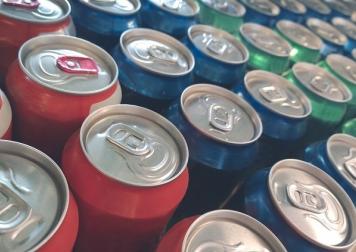How Does Diabetes Cause Kidney Failure?
Of the 100,000 people diagnosed with kidney disease each year in the U.S., 43.8 percent of them will have developed it because of diabetes, according to the National Institute of Diabetes and Digestive and Kidney Diseases (NIDDK), a part of the National Institutes of Health (NIH). But why does diabetes damage the kidneys? Not all diabetics develop chronic kidney disease (CKD) or renal failure, so why do some end up on dialysis or needing a kidney transplant? Why is kidney failure one of the possible symptoms of diabetes?
Kidneys are remarkable organs that filter the blood and separate waste products from circulation. The short story with diabetes, both in type 1 diabetes and type 2 diabetes, is that the disease taxes the filtration system. But the mechanism by which this happens is a little bit more complicated.
How Diabetes Can Cause Kidney Failure
Each kidney contains a million or so filtering units called nephrons. These nephrons are made up of tiny blood vessels called capillaries as well as tubules. Normally, waste can pass through the small holes in the capillaries and make their way into urine, while larger molecules remain in the bloodstream. Over time, high blood sugar levels signal a variety of metabolic and structural changes in the nephrons to scar them, thicken them, and make the capillaries more leaky.
When the nephrons are damaged, kidney disease has begun and larger molecules that used to remain in the blood pass through into the urine. The early stage of kidney damage is called microalbuminuria. Later, when larger amounts of protein pass into the urine, macroalbuminuria results. When macroalbuminuria is present, the kidneys are very damaged and end-stage renal disease (ESRD), a form of kidney failure, is likely to follow. In ESRD, dialysis (using a machine to filter the blood) or kidney transplant is necessary.
Factors that can influence the risk of a person developing renal failure include genetics, ethnicity, blood pressure, and blood sugar management. People who are African American, American Indian, Hispanic or Latino have an increased risk of developing CKD or ESRD as compared to Caucasians. In addition, tight blood glucose control decreases risk as well as controlling blood pressure.
Symptoms and Treatment of Kidney Failure
Unfortunately, there are surprisingly few symptoms of CKD or renal failure. This is because as some nephrons are damaged, others work doubly hard to make up for the difference. Waste products don't generally build up in the blood and cause symptoms until late in disease progression. By the time nausea, insomnia, edema, poor appetite, upset stomach, weakness, and difficulty concentrating occur, the kidneys are very damaged and almost all filtering capacity is gone. For this reason, if a person has diabetes, it is especially important that his or her doctor monitor kidney function at least on a yearly basis.
If CKD is detected early in the microalbuminuria stage, treatments are available that can slow the progression of kidney damage. Tight blood pressure control, lowering cholesterol levels, maintaining tight blood glucose control, and eating a low-protein diet are all possible treatments that can decrease the burden on the kidneys and delay disease progression. In addition, certain medications called angiotensin-converting enzyme inhibitors (ACEIs) and angiotensin receptor blockers (ARBs) have been shown to decrease kidney damage.
Kidney failure creates a $32-billion-dollar burden on the U.S. healthcare system each year, according to NIDDK. But diabetes research continues to search for factors that may increase the risk for CKD and ESRD as well as for ways to treat or reverse the disease.
Sources: National Institutes of Health; American Diabetes Association
Photo: Pixabay



































